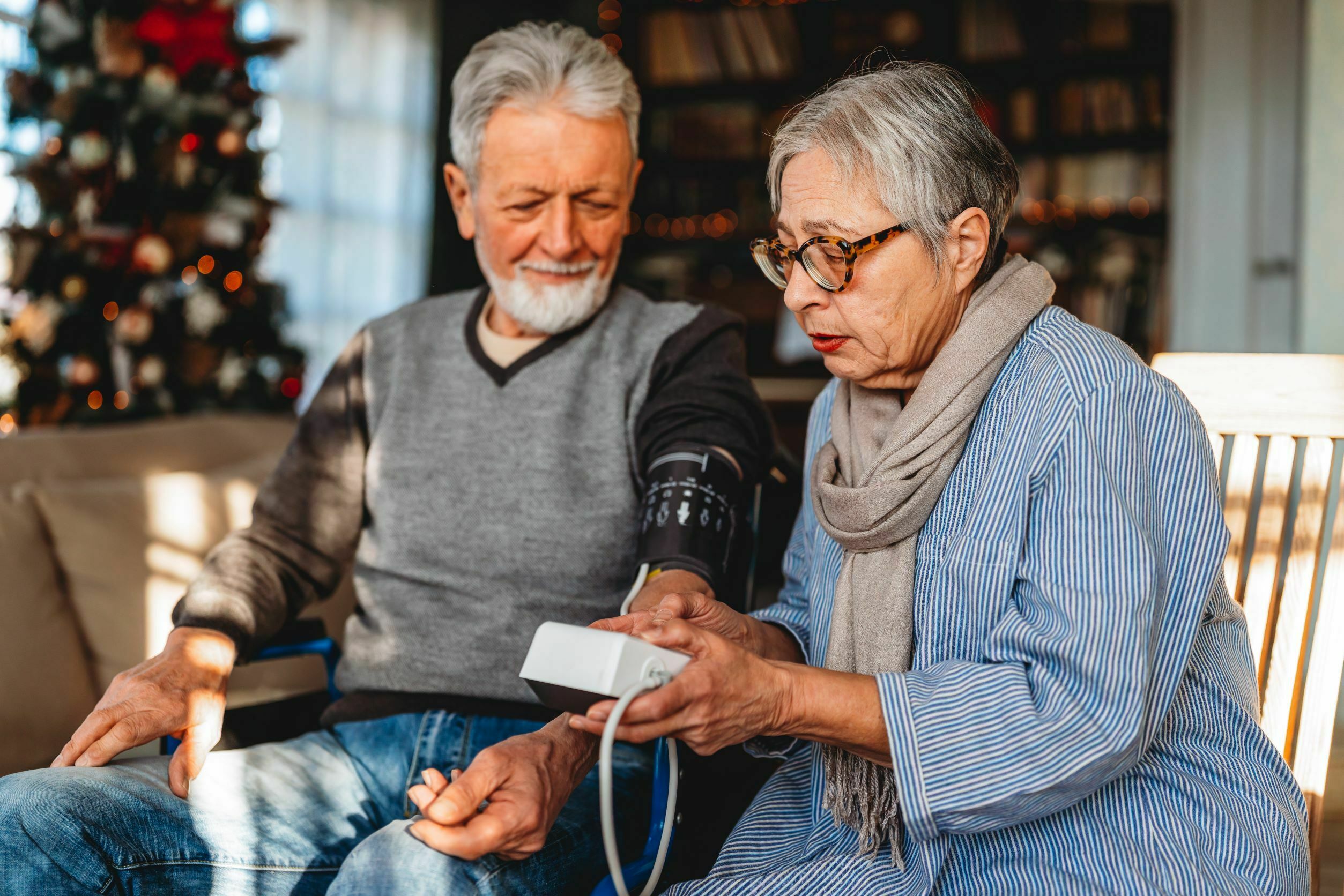Chronic diseases are described as illnesses that last a year or longer and necessitate continuing medical attention and can impede everyday activities. In the United States, chronic diseases such as heart disease, cancer, chronic lung disease, stroke, Alzheimer’s disease, chronic kidney disease and diabetes are the main causes of mortality and disability. It is estimated that 6 out of 10 adults in the United States have a chronic disease and 4 in 10 adults have 2 or more chronic diseases. They are also the main drivers of the $3.8 trillion in annual health-care spending in the United States.[1]
Dealing with a chronic disease can be taxing and present unique challenges. People with chronic diseases should learn to deal with the disease manifestations, take care of the treatments, ensure clear communication with their healthcare provider, maintain emotional balance, and retain self-assurance and a positive self-perception in life. Many people have the ability to live a long life despite the existence of a chronic illness. In addition, if chronic diseases have early detection, management, and monitoring, affected individuals can prevent significant health problems, issues, and the costs that come with them. Since there is a substantial chance to maintain independence, avoid additional health problems, and reduce expenditures, the focus of disease management of chronic diseases has been numerous and constantly evolving, aiming for new innovations.
The term “remote patient monitoring” encompasses a wide range of services and technologies for managing and keeping track of a variety of health issues. Point of care devices like weighing scales, glucometers, implantable cardioverter-defibrillators, and blood pressure monitors are all examples of remote patient monitoring devices. These devices may collect and submit health data on their own. Remote patient monitoring could also become a part of a fully integrated system that includes data collection, analysis, and reporting on health system that communicates with a large number of nodes in the health-care system.
These kinds of transformative technologies have the potential to significantly advance national goals of improved health care quality and efficiency, it is critical to understand their evolution, early adopter experiences, and the business models that may support their deployment. Here are the 6 advancement opportunities[2] of RPM for Chronic Disease Management:
Early warning system
Chronic diseases need timely detection of deterioration for early intervention before unplanned and preventable services are needed. Real-time Continuous Remote Patient Monitoring can warn healthcare providers when a person’s health begins to deteriorate so they can enable and trigger early intervention. Some instruments are also capable of self-activation and inform patients and caregivers that there is a problem and it is now necessary to take a test or medication. Some devices also detect when the normal values and/or data exceed a certain threshold, in which clinicians should be consulted. These types of integrated systems offer alerts when a person’s health deteriorates, allowing patients, carers, and physicians to communicate with one another and intervene as soon as possible, and change treatment strategies as needed.
Care integrator
RPM technology solution can provide integration of care via exchange of data and communication across multiple co-morbidities, multiple providers, and complex disease states. Remote patient monitoring devices can also connect a complex web of carers who might otherwise be unable to communicate and work together to improve the health of a person with chronic diseases.
Progress tracker
To encourage patient behavioral change and self-care, motivational techniques like progress tracking are essential. Remote patient monitoring devices can also promote self-care with evidence-based health treatment, whether the data is presented as a number like vital signs or a summary graph of trends over time. Remote patient monitoring allows the patient to get that daily information, that daily support, that daily help, that can make all the difference in the world in terms of their health outcomes and their daily care outlook.
Confidence builder
For patients, being enrolled in an RPM program can also increase trust, satisfaction, and develop a feeling of “connectedness” with healthcare providers. RPM has been found to boost productivity and patients’ responsibilities in their own care. It also enhanced chronic illness management and prevented acute exacerbations of chronic diseases. Using a number of remote patient monitoring devices, whether integrated or standalone can help persons with chronic diseases to monitor themselves and collect information like blood pressure, heart rate, and blood glucose levels all by themselves. In this way, RPM increases self-efficacy and confidence of persons with chronic diseases that certain health activities will result in better health.
Capacity builder
Medical emergencies place a significant strain on healthcare systems, including overcrowding in emergency departments, upsetting utilization control programs, and compelling clinical personnel to work excessive hours on a regular basis. Remote patient monitoring can help providers reduce medical emergencies by taking an emergency-prevention approach. Prevention and real-time health tracking would aid in the management of health-related concerns preventing emergency consultations and readmissions. This can lead to workforce changes shifts to lower-cost and more plentiful health care workers, including medical assistants, community health workers, and social workers focusing on other health emergencies.
Productivity booster
Medical emergencies place a significant strain on healthcare systems, including overcrowding in emergency departments, upsetting utilization control programs, and compelling clinical personnel to work excessive hours on a regular basis. Remote patient monitoring can help providers reduce medical emergencies by taking an emergency-prevention approach utilizing its AI and ML engine and other advanced technologies to facilitate remote monitoring and care delivery. Prevention and real-time health tracking would aid in the management of health-related concerns, preventing emergency consultations and readmissions. This can lead to workforce changes and shifts to lower-cost and more plentiful health care workers, including medical assistants, community health workers, and social workers focusing on other health emergencies. Remote patient monitoring devices can also increase the ability to perform more with less and eliminate duplication of service.
Takeaway
In conclusion, Remote Patient Monitoring technologies, given the opportunities they offer, are on the verge of becoming mainstream in the healthcare industry. RPM programs can make a difference in a variety of health-related areas and well-being of people with chronic diseases, like lowering the cost of healthcare and avoiding acute care episodes and exacerbations. At the same time, remote patient monitoring can assist in the improvement of patient safety and lessen exposure to contagions in the hospital setup. The main purpose of remote patient monitoring is to make sure that patients with chronic diseases and undergoing long-term therapy will receive excellent and economical care, even if access has migrated from in-clinic to remote care. Its widespread adoption will lead to an improvement in the independence, safety, and health of people with chronic diseases.
References:
- Health And Economic Costs Of Chronic Diseases | CDC. (2021, June 23). Health and Economic Costs of Chronic Diseases | CDC. https://www.cdc.gov/chronicdisease/about/costs/index.htm.
- Coye M, Haskelkorn A, DeMello S. Remote Patient Management: Technology-Enabled Innovation And Evolving Business Models For Chronic Disease Care. Health Affairs. 2009; 28: 126-135.








